Carcassonne is essentially medieval Dominoes, only with pretty pictures and a novel layer of area control mechanics. Inspired by the French town of the same name (which is heralded for its impressive fortifications), the game sees players collectively expanding an intricate countryside map, building and claiming territory in order to score the most points.
Like the legendary game of Catan, it’s one of those gateway board games that everyone and their mom has played at one point or another. But is Carcassonne really worth it in 2025? And does it still deserve to be considered one of the best board games two decades after it was first published?
Features & design
| Price | $49.99 / £36.99 |
| Ages | 7+ |
| Game type | Worker placement |
| Players | 2 – 5 |
| Lasts | 30mins |
| Complexity | Low |
| Designers | Klaus Jürgen-Wrede |
| Publisher | Z-Man Games |
| Play if you enjoy | Ticket to Ride, Dorfromantik, Cartographers, Terraforming Mars, Kingdomino |
- Lay down tiles to create a map
- Claim features with your tokens to get points
- Based on a historic French city fortress
Seeing as it’s based on the eponymous French city of walls and picturesque streets, it shouldn’t come as a surprise to hear that the board game challenges you to build your own using random tiles. These feature parts of towns, roads, abbeys, and gardens that you’ve got to complete in a grand jigsaw puzzle.
More specifically, each player blind-draws a tile and takes it in turns to expand fields, cities, or roads by joining the piece with a matching edge currently making up the board. The game ends when all tiles are placed.
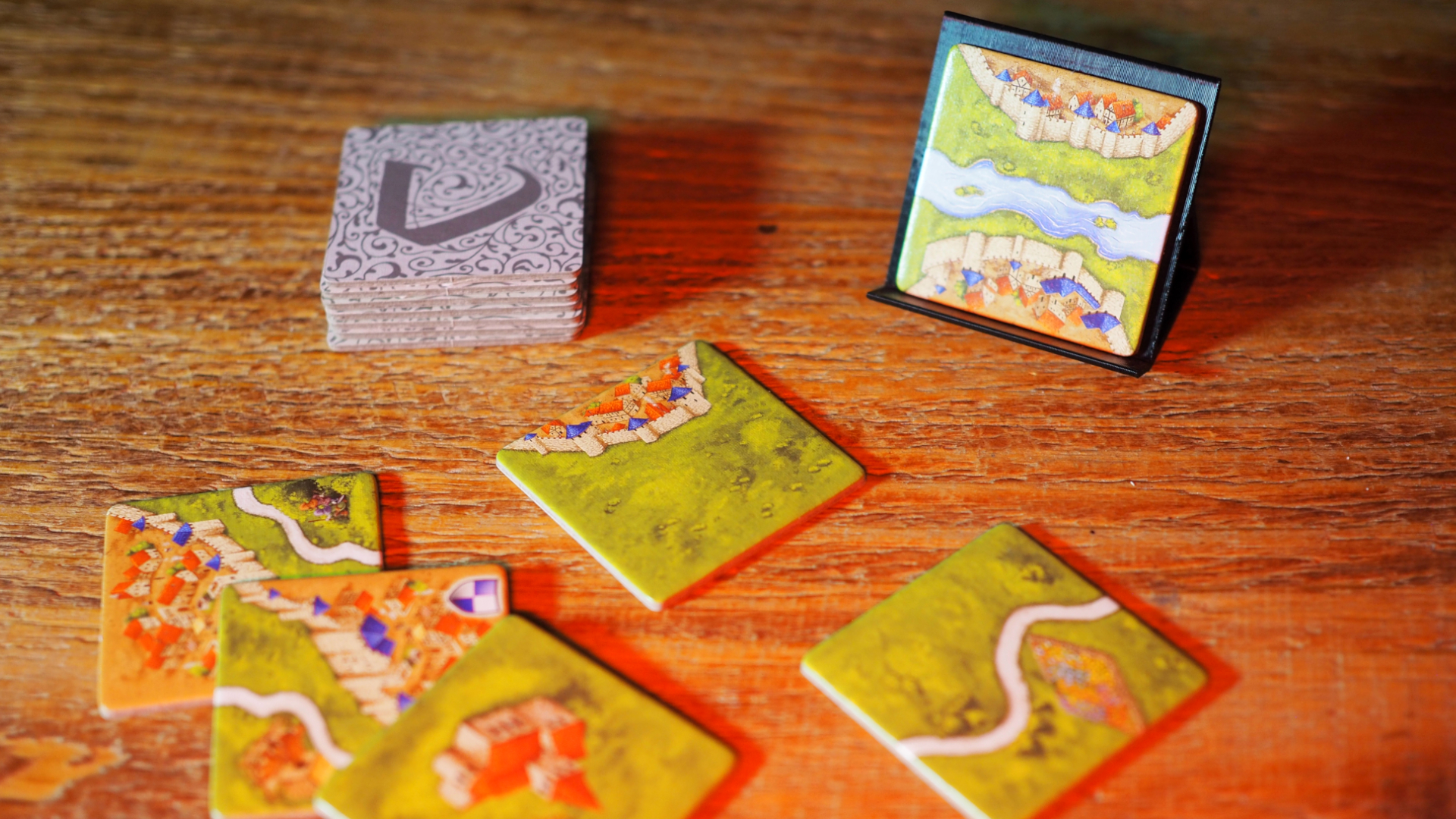
After placing a tile, a player can decide to claim something on it by putting one of their wooden ‘meeples’ (the people-shaped tokens, here called ‘Followers’) there. Points are awarded to that player as soon as their road or city is completed, or their monastery is surrounded by tiles. They then take that meeple back and increase their score by however much they’ve earned. The bigger the city or road, the more points are up for grabs.
This is essentially the entire game, though as you play it’s important to remember the tiles that will be scored at the end. One of the more powerful options for claiming map features, and one that’s easy to overlook, is laying a meeple down in a field. This earns you three points for every completed city within or bordering that field. Powerful stuff.
No matter what you build, it’ll look rather handsome when finished. A completed board is a satisfying, patchwork map of medieval life.
Yes, the meeple you place there are simplistic, but they’re a downright iconic design that stands the test of time.
Gameplay
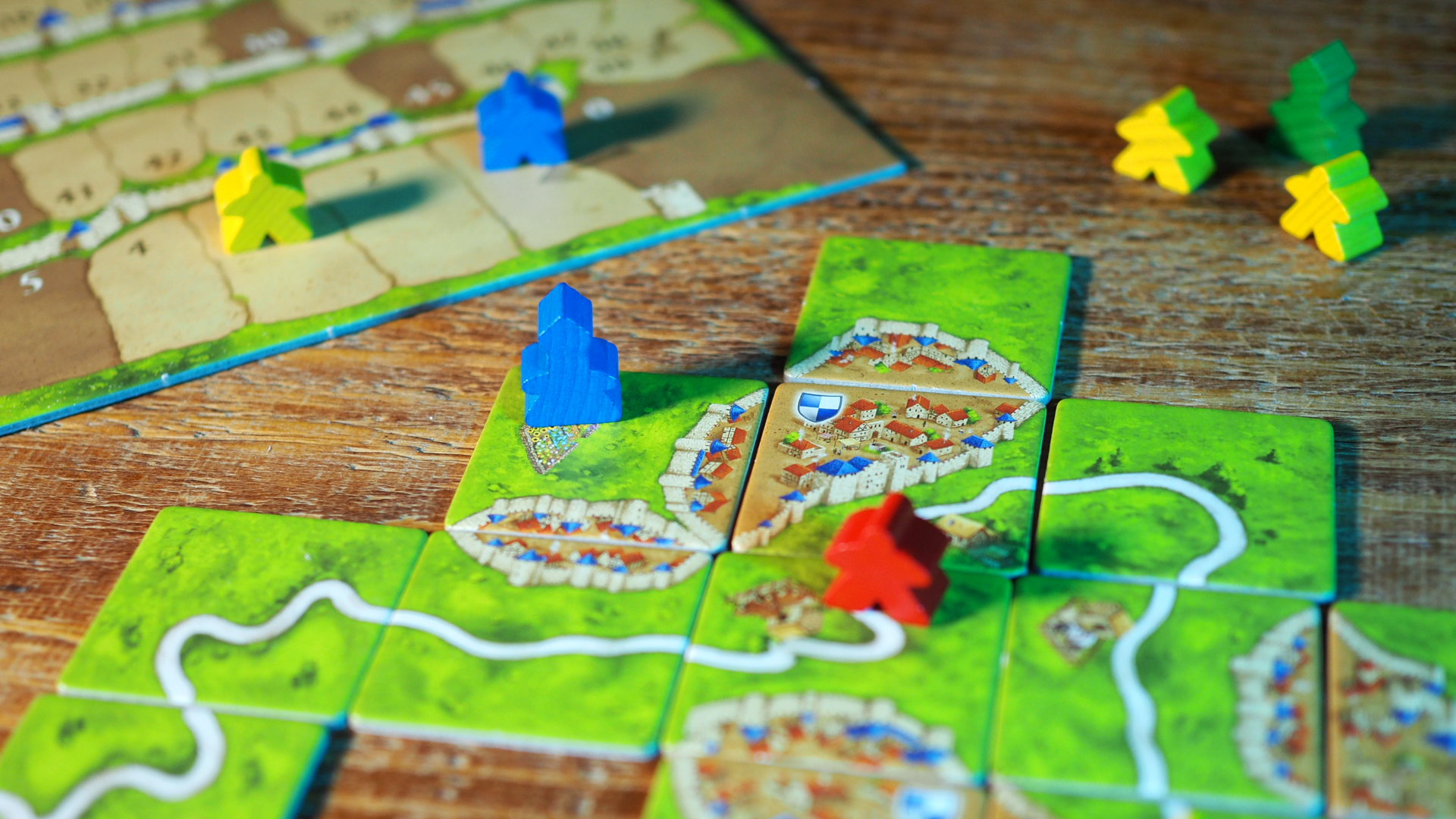
- Simple rules that are easy to learn
- Heavy focus on luck-of-the-draw
- Perfect for beginners, may frustrate experienced gamers
If you’re new to the best adult board games, are hunting down the best family board games, or haven’t ventured far beyond Monopoly, Carcassonne serves as the perfect entry-point to this hobby. It’s accessible, easy-going, and strategic enough to keep you invested until the end of each match. There’s a reason why this is often touted as a good ‘beginner’ board game, after all.
On the flip side, Carcassonne may not appeal to players who are used to more complex board games or even wargames. While it’s easy to learn and teach by comparison, it may leave your average Eurogamer wanting more. Why play with colored blocks when you have Mechano, am I right?
Play also relies almost entirely on the luck of the draw. Players decide where to place tiles and what to claim, but there is no selection process or forewarning around what’s coming next. It makes it hard to form strategies and frustration can set in toward the end as you draw tiles from the dregs of the bag. Of course, there are a couple of simple tactics you can set up early on, especially if you’re privy to how many of each kind of tile there is in your set, but you’re never entirely sure if they’ll fully play out.
Similarly, avid city builders will wince at the heavy procedurality, particularly if they have an artistic eye. Honestly, some roads and cities end up looking like they were designed by an alien species.
That said, there are plenty of expansions to give it more depth.
Expanding the map
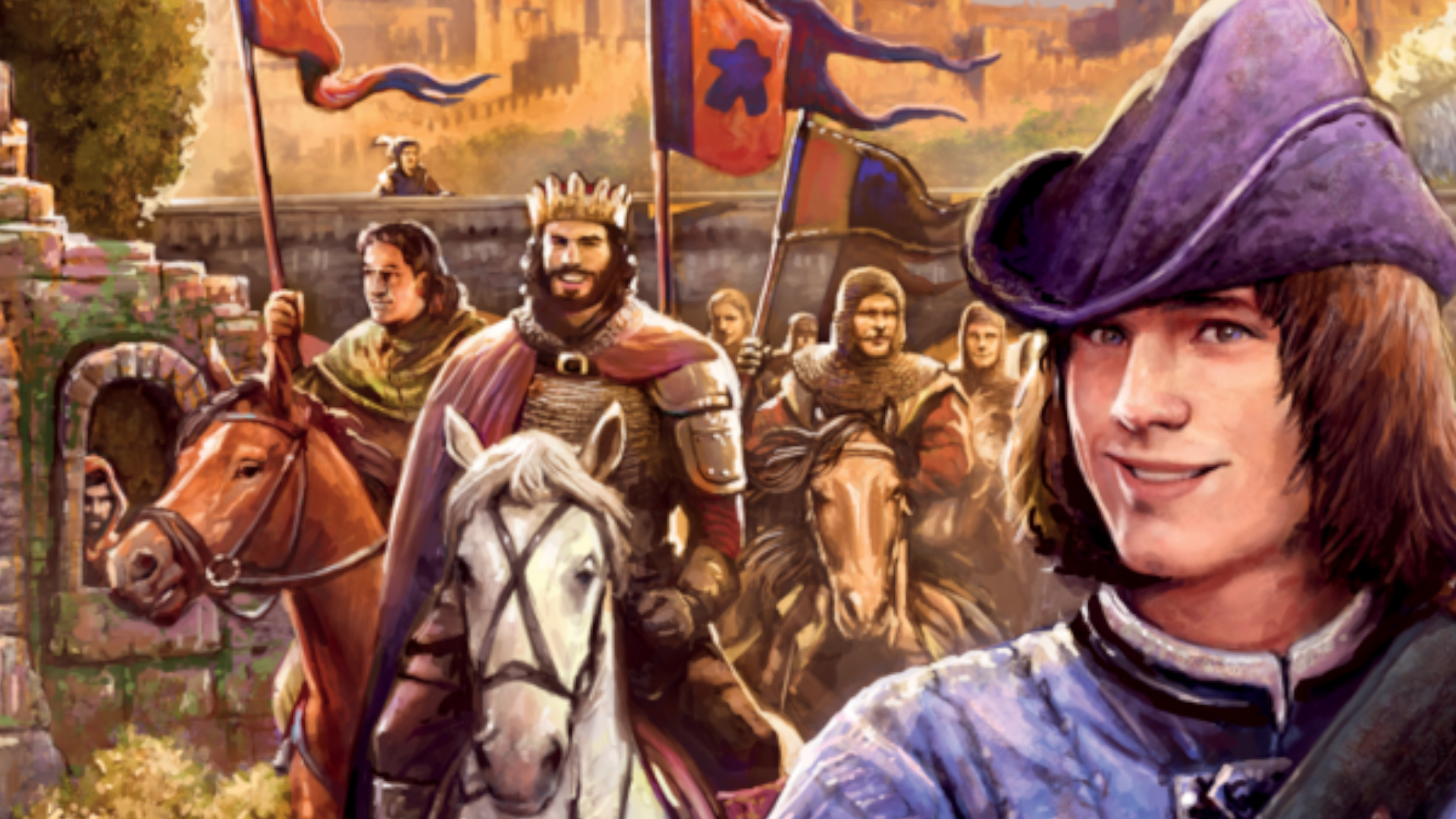
Carcassonne is one of those games with a near-endless supply of expansion packs. You can get everything from castles and kings to bazaars, and they’re all visible on publisher Z-Man Games’ store.
In addition, the randomization means there’s heaps of replayability. With countless tile combinations and more than a few ways to score, no two games are ever the same.
Where Carcassonne really shines is in its simplicity, too. Don’t get me wrong, assumptions and accidental house rules often creep up. Players often assume they know the rules so they don’t think to check, but Carcassonne is at least quick to get the hang of. That’s not least thanks to competitive symmetry (when everyone is playing the same game as opposed to working toward separate, hidden goals). No one is stuck pouring over their own version of the rules, and there’s also a real social element to a game in which everyone contributes to the building of the same board.
There’s a very careful limit placed on the number of meeples each player has in Carcassonne. The fact you use them as placeholders means you have to think carefully about the things you claim and the Followers you’ll have left over. It’s a smart way to give other players who might not be doing so well a fair chance to catch up.
Should you buy Carcassonne?

Carcassonne is one of those quintessential worker placement board games that’s appropriate for the whole family, and takes mere moments to teach. Even non-board gamers tend to get the hang of it pretty quickly, so it’s a great one to whip out at family gatherings. If you’re looking for something with broad appeal, Carcassonne is a great option.
For those who want a greater challenge, though, it may be worth looking at the likes of Life in Reterra instead. It’s a very similar concept, but has far more depth.
Ratings
| Criteria | Notes | Score |
|---|---|---|
| Game mechanics | Carcassonne is the definition of easy and breezy – it’s engaging, but not particularly deep. | 3 / 5 |
| Accessibility | This is very easy to get into, so is perfect for anyone that doesn’t play many board games or those who’d prefer something straightforward. | 5 / 5 |
| Replayability | Although you may tire of the mechanics eventually, Carcassonne is endlessly replayable. | 4 / 5 |
| Setup and pack-down | Because you usually start from a single tile and draw from there, the only complication during setup is shuffling. Meanwhile pack-down is just as straightforward. | 4 / 5 |
| Component quality | Carcassonne’s pieces are built to last. They may not be the flashiest, but they’re sturdy. | 4 / 5 |
Buy it if…
Don’t buy it if…
How we tested Carcassonne
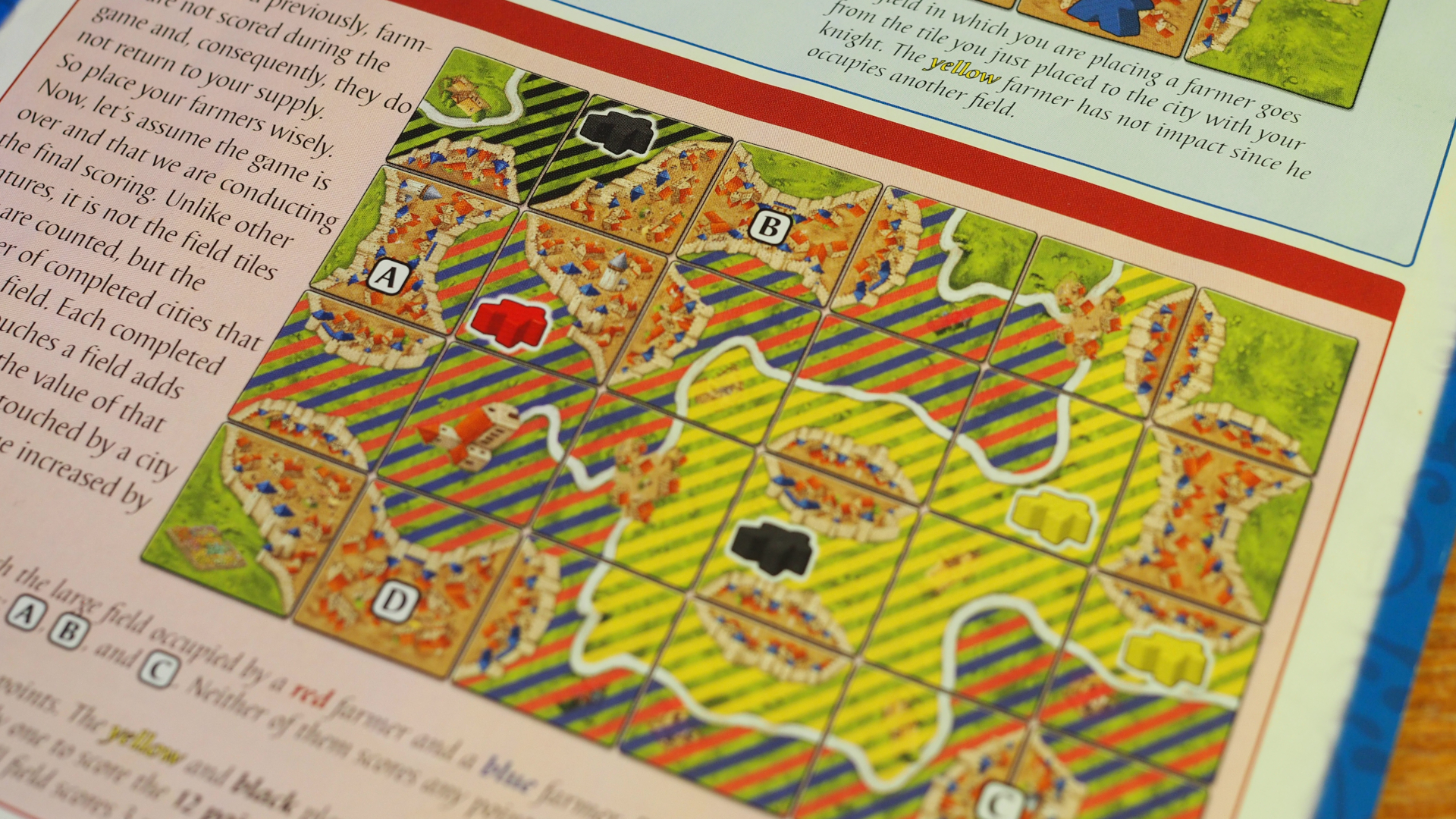
This review was conducted using a copy of the game purchased by the reviewer.
We have had Carcassonne in our collection for years, so have spent a long time getting to grips with its systems. For this review, we paid particular attention to how it holds up more than 20 years after it was first published.
For more on our process, see our guide to how we test board games. You can also check out the wider GamesRadar+ reviews policy.
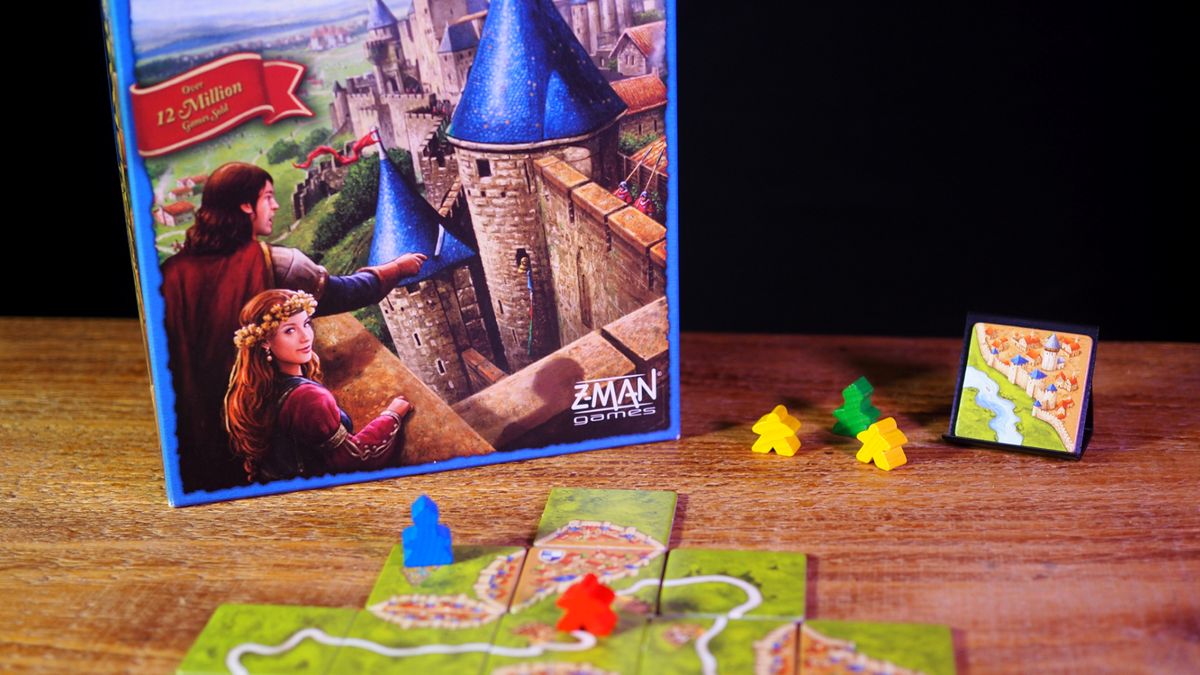











Leave a Reply